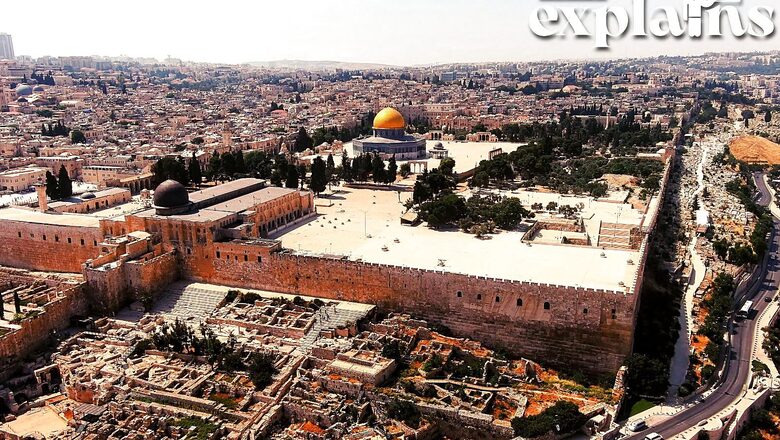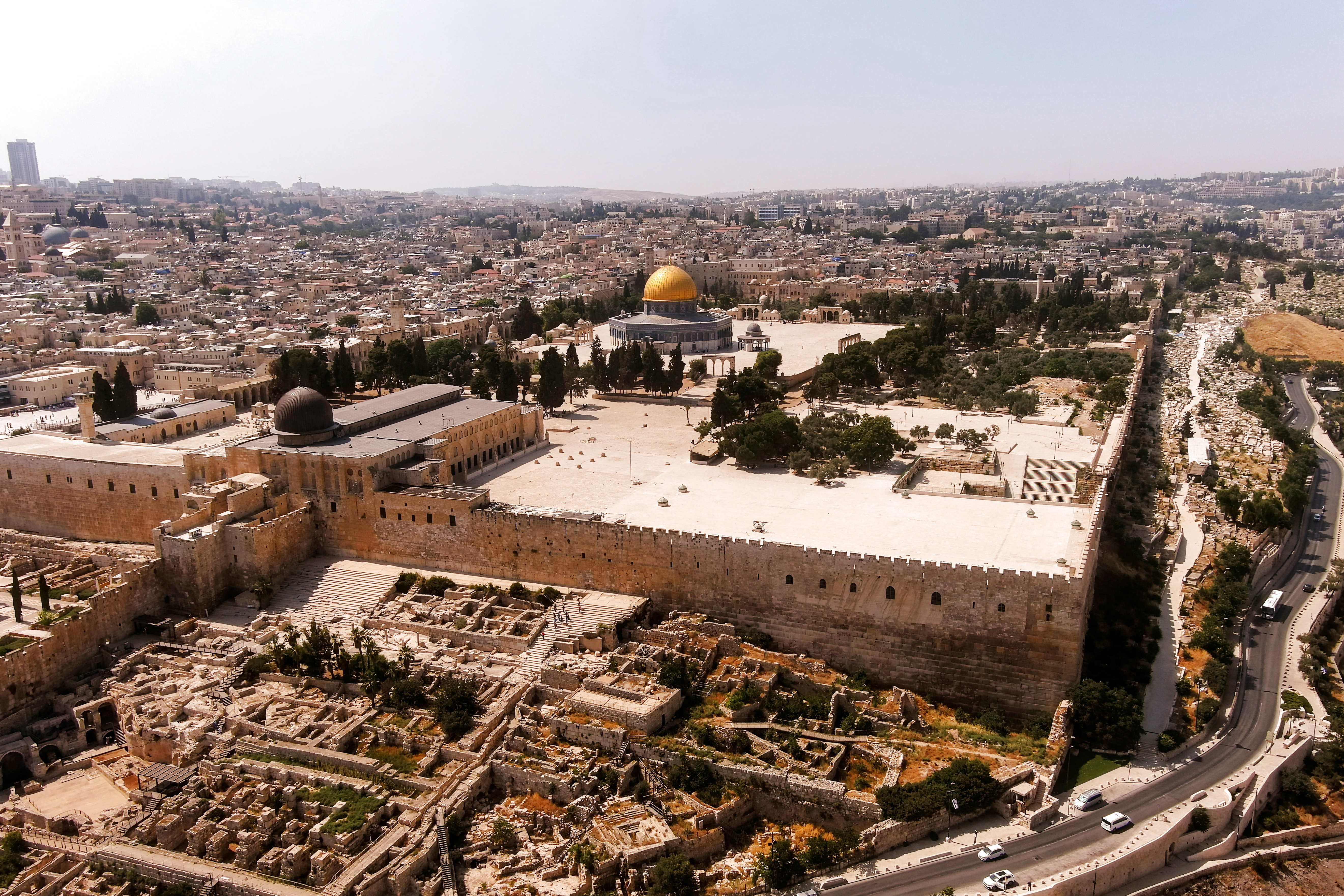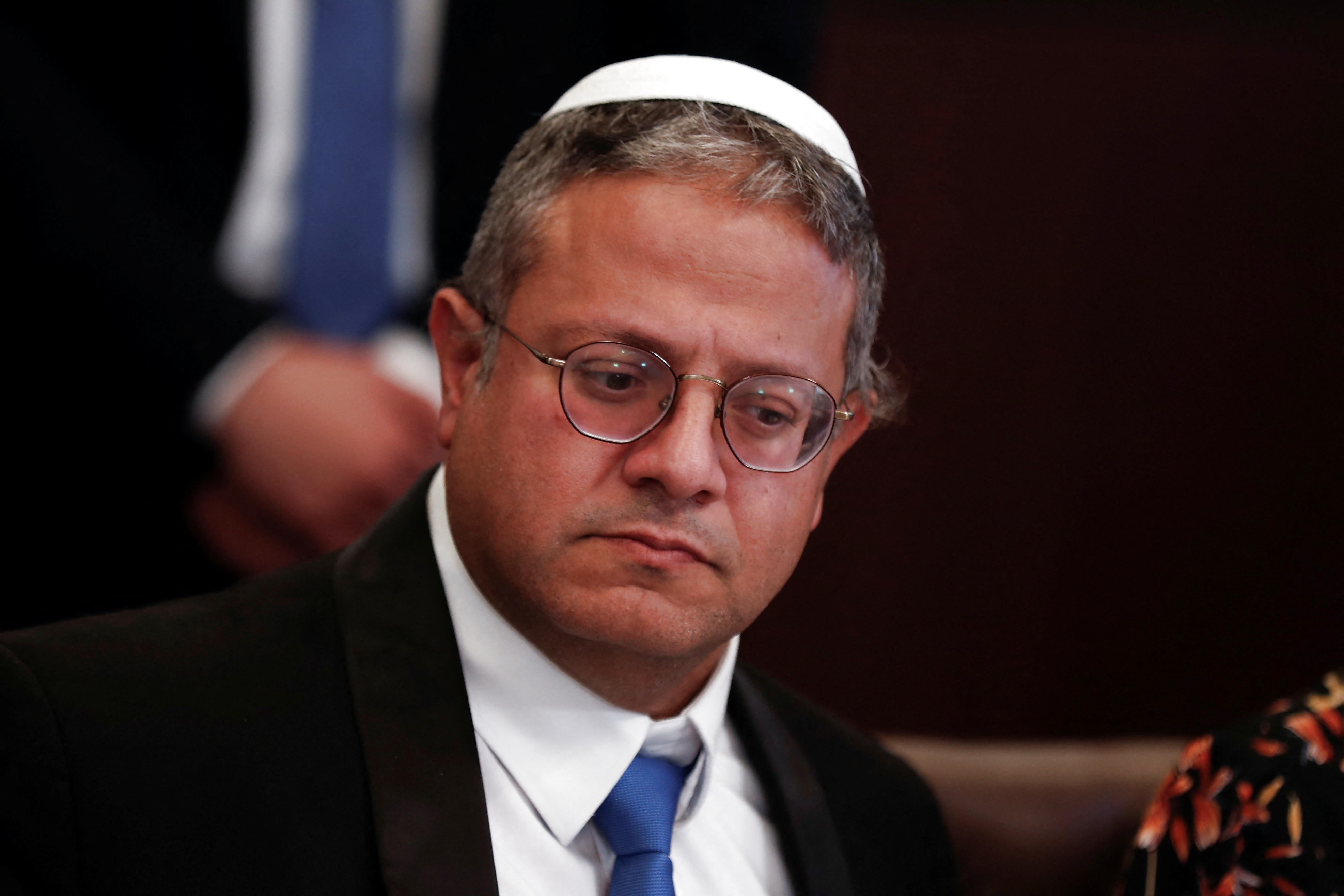
views
The United Nations and the United States led a chorus of international condemnation on Tuesday of Israel’s extreme-right new national security minister’s visit to Jerusalem’s highly sensitive Al-Aqsa mosque compound.
The move by firebrand Itamar Ben-Gvir enraged Palestinians and US allies in the Arab world, while Western governments warned that such moves could jeopardise the fragile status quo at Jerusalem’s holy sites.
News18 explains the controversy:
About the Al Aqsa Mosque
During the 1967 Six-Day War, Israel seized the 14-hectare (35-acre) rectangular esplanade at the southeast corner of the Old City, along with the rest of east Jerusalem, which was later annexed in a move never recognised internationally.

The Palestinians want the eastern sector of Jerusalem, which includes the Old City and its sacred sites, to be the capital of their future state. Israel considers all of Jerusalem to be its indivisible capital.
The compound, known to Muslims as Al-Haram al-Sharif (the Noble Sanctuary), houses the Al-Aqsa mosque as well as the Dome of the Rock, a famous golden shrine.
It is the third-holiest site in Islam after Mecca’s Grand Mosque and the Prophet’s Mosque in Medina, both in Saudi Arabia, and is believed to be where the Prophet Mohammed ascended to heaven on a winged horse.
Omar, Islam’s second caliph, built the compound in its current form in the seventh century on the site of the Second Jewish Temple, which was destroyed by the Romans around 70 AD.
Jews from all over the world visit the area to pray at the Western Wall, a relic of the Second Temple’s retaining wall located beneath the esplanade.
In Hebrew, the entire area is known as Har HaBayit, or the Temple Mount.
Select entry
Under a status-quo agreement, Jordan administers Al-Aqsa mosque in collaboration with Palestinians, but access to the site is controlled by Israeli security forces.
The decades-old rules allow Muslims to enter the esplanade at any time of day or night, but non-Muslims are only permitted to do so at specific times and without praying.
However, in recent years, Israeli police have repeatedly restricted access to the compound during times of tension, while the number of Jews visiting the compound has increased.

Some ultra-nationalist Jews have been caught praying on the esplanade, causing friction with Muslim worshippers.
Decades of conflict
The site has served as a lightning rod in the conflict between Israel and the Palestinians.
In 1996, an Israeli decision to open a new entrance to the west of the esplanade sparked clashes that resulted in the deaths of more than 80 people over the course of three days.
A controversial visit to the esplanade by then-right-wing opposition leader Ariel Sharon in September 2000 was one of the main catalysts for the second Palestinian intifada, which lasted from 2000 to 2005.
In clashes the day after Sharon’s visit, Israeli police killed seven Palestinian protesters.
The compound was temporarily closed in 2017 after three Arab Israelis opened fire on Israeli police near the site, killing two of them before fleeing into the compound and being shot dead by security forces.
During important Jewish and Muslim commemorations two years later, clashes between police and worshippers at the compound injured dozens of Palestinians.
During the Muslim holy month of Ramadan in 2021, the esplanade was once again the site of clashes between Israeli police and Muslim worshippers, events that led to an 11-day war between Israel and the Palestinian militant group Hamas.
The site saw renewed clashes in the spring of 2022, injuring hundreds of Palestinians.
What About Ben-Gvir’s Actions?
On December 29, Ben-Gvir began his ministerial career as part of Israel’s most right-wing government in history, led by Benjamin Netanyahu.

While Ben-Gvir has been to the compound several times since joining parliament in April 2021, his presence as a top minister is significant – and could lead to violence, a report by Firstpost explains.
The Gaza Strip is ruled by Hamas, and an 11-day war broke out between Palestinian militants and Israel in May 2021, following violence at Al-Aqsa mosque.
Hundreds of Palestinians and dozens of Israeli police officers were injured in the preceding clashes in east Jerusalem, which were sparked by restrictions on Palestinian gatherings and possible evictions.
During this time, Ben-Gvir held rallies at Israeli settler homes in east Jerusalem, which Israel has occupied since the 1967 Six-Day War.
A controversial visit by then-opposition leader Ariel Sharon in 2000 was one of the main catalysts for the second Palestinian intifada, which lasted until 2005.
Some were concerned about Ben-Gvir because of his history of advocating violence against Palestinians.
Ben-Gvir has advocated for the expulsion of Arab-Israelis deemed disloyal to the state, as well as the annexation of the occupied West Bank.
Until recently, he had a portrait of Baruch Goldstein in his living room, who massacred 29 Palestinian worshippers at a Hebron mosque in 1994.
Ben-Gvir says he wants to end Palestinian autonomy in parts of the occupied West Bank and keep Israel’s occupation of Palestinians indefinitely.
In addition, while visiting a tense Palestinian neighbourhood in east Jerusalem, the far-right minister brandished a pistol.
Netanyahu defended Ben-Gvir in an interview with NPR, saying he has “modified a lot of his views since then” and that “with power comes responsibility.”
Regardless, Ben-Gvir has lobbied to change the site’s management to allow Jewish prayer, a move opposed by mainstream rabbinical authorities.
According to Waqf guards, Ben-Gvir was accompanied by Israeli security forces, and a drone hovered above the holy site.
Visitors arrived at the plaza after he left on Tuesday morning, and the situation remained quiet.
After visiting the site, Ben-Gvir tweeted that it “is open to everyone, and if Hamas thinks that threatening me will deter me, it should understand that times have changed.”
With inputs from AFP
Read all the Latest Explainers here

















Comments
0 comment